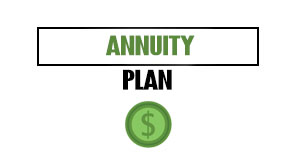The president has increased pressure on Federal Reserve Chair Jerome Powell to lower interest rates, claiming that reduced borrowing costs would help revive the sluggish real estate market. However, housing experts caution that the affordability issues plaguing the US housing sector resist simple solutions.
As home sales continue to slow and prices remain high in many markets across the country, the administration has focused on monetary policy as a potential remedy. The president believes that lower interest rates would make mortgages more accessible to potential homebuyers currently priced out of the market.
Interest Rates and Housing Affordability
The Federal Reserve’s monetary policy decisions have significant impacts on mortgage rates, which directly affect monthly payments for homebuyers. Higher interest rates, implemented to combat inflation, have pushed mortgage costs to levels that exclude many first-time buyers from entering the market.
A reduction in the federal funds rate would likely lead to lower mortgage rates, potentially decreasing monthly payments and qualifying more Americans for home loans. The president’s argument centers on this mechanism as a way to stimulate housing market activity.
However, housing economists point out that interest rates represent just one factor in the complex housing affordability equation. Even with lower rates, prospective buyers would still face:
- Historically high home prices in many markets
- Limited housing inventory, particularly for starter homes
- Wage growth that hasn’t kept pace with housing costs
- Strict lending standards following the 2008 financial crisis
Complex Challenges Require Comprehensive Solutions
Housing analysts stress that the current market stagnation stems from multiple factors that have developed over years. The shortage of affordable housing units, particularly in high-demand areas, predates the recent interest rate increases.
Construction of new homes has lagged population growth for over a decade, creating a structural deficit in housing supply. Zoning restrictions, building material costs, labor shortages, and land constraints have all contributed to this shortfall.
Affordability challenges in the US don’t have an easy fix,” noted housing experts familiar with the market conditions.
Some economists suggest that a more effective approach would require coordinated policy actions beyond monetary adjustments, including:
Local zoning reforms to allow higher-density housing, targeted tax incentives for first-time homebuyers, and programs to increase the supply of affordable housing units would likely have more lasting impacts than interest rate cuts alone.
Fed Independence and Policy Considerations
The president’s public pressure on the Federal Reserve has raised questions about central bank independence. Traditionally, the Fed operates independently from political influence to make monetary policy decisions based on economic data rather than political considerations.
Powell and the Federal Open Market Committee must balance multiple economic factors when setting interest rates, including inflation targets, employment levels, and overall economic stability—not just housing market conditions.
Financial analysts note that while lower interest rates might provide some relief to potential homebuyers, they could also risk reigniting inflation if implemented too quickly or without sufficient economic justification.
As the debate continues, both homebuyers and industry professionals watch closely for signals from the Fed about future rate decisions. Meanwhile, the housing market remains caught between high prices, limited inventory, and interest rates that, while lower than historical peaks, still present barriers to many Americans hoping to purchase homes.
Featured Image: Photo by Kaboompics.com; Pexels
















